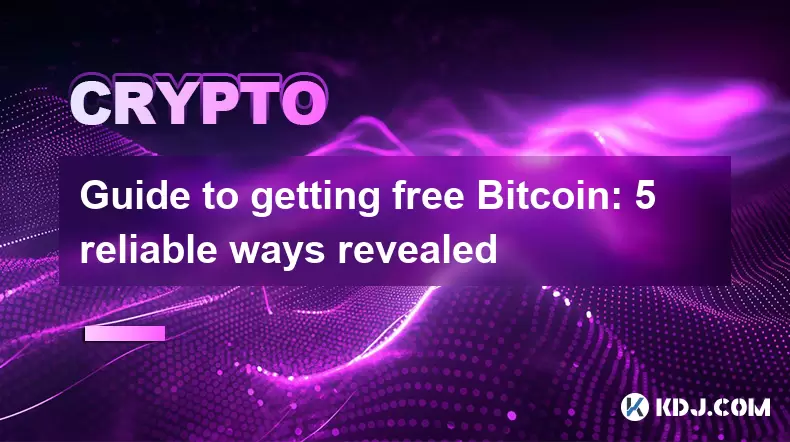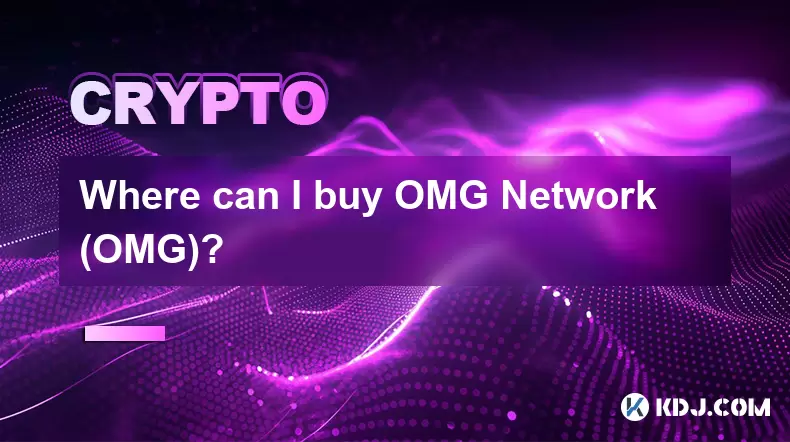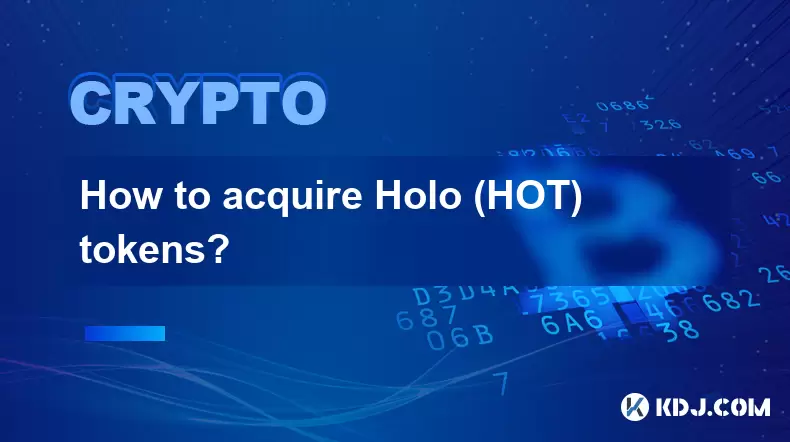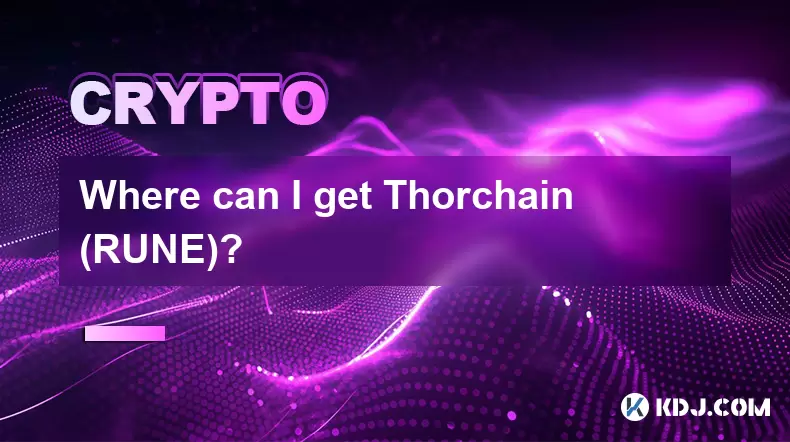-
 Bitcoin
Bitcoin $117500
2.15% -
 Ethereum
Ethereum $3911
6.19% -
 XRP
XRP $3.316
10.79% -
 Tether USDt
Tether USDt $1.000
0.01% -
 BNB
BNB $787.2
2.24% -
 Solana
Solana $175.2
4.15% -
 USDC
USDC $0.9999
0.00% -
 Dogecoin
Dogecoin $0.2225
8.40% -
 TRON
TRON $0.3383
0.28% -
 Cardano
Cardano $0.7868
6.02% -
 Stellar
Stellar $0.4382
9.34% -
 Hyperliquid
Hyperliquid $40.92
7.56% -
 Sui
Sui $3.764
7.63% -
 Chainlink
Chainlink $18.48
10.66% -
 Bitcoin Cash
Bitcoin Cash $582.1
1.88% -
 Hedera
Hedera $0.2601
6.30% -
 Avalanche
Avalanche $23.33
4.94% -
 Ethena USDe
Ethena USDe $1.001
0.02% -
 Litecoin
Litecoin $122.3
2.04% -
 UNUS SED LEO
UNUS SED LEO $8.969
-0.27% -
 Toncoin
Toncoin $3.339
0.86% -
 Shiba Inu
Shiba Inu $0.00001287
4.30% -
 Uniswap
Uniswap $10.43
7.38% -
 Polkadot
Polkadot $3.861
5.08% -
 Dai
Dai $1.000
0.02% -
 Bitget Token
Bitget Token $4.513
3.41% -
 Monero
Monero $267.7
-6.18% -
 Cronos
Cronos $0.1499
4.14% -
 Pepe
Pepe $0.00001110
5.15% -
 Aave
Aave $284.9
8.28%
Guide to getting free Bitcoin: 5 reliable ways revealed
Earn free Bitcoin through faucets, airdrops, referrals, staking, and mining, but be aware of risks and choose reputable platforms for best results.
May 31, 2025 at 05:49 am

Introduction to Free Bitcoin
Getting free Bitcoin might sound too good to be true, but there are indeed legitimate ways to acquire some without spending a dime. In the cryptocurrency world, earning free Bitcoin can be achieved through various methods that range from simple tasks to more involved activities. This guide will reveal five reliable ways to get your hands on free Bitcoin, ensuring you have a solid understanding of each method.
Method 1: Bitcoin Faucets
Bitcoin faucets are one of the oldest and most straightforward ways to earn free Bitcoin. These websites or apps reward users with small amounts of Bitcoin for completing simple tasks, such as solving captchas, watching ads, or playing games. While the amounts earned are typically minimal, they can add up over time.
- Choose a reputable faucet: Start by researching and selecting a well-known Bitcoin faucet. Websites like FreeBitcoin and Cointiply are popular choices.
- Sign up: Create an account using your email address. Some faucets may require you to verify your email.
- Complete tasks: Navigate to the task section and complete the required actions to earn Bitcoin. This could be solving a captcha, watching a video, or participating in a survey.
- Withdraw your earnings: Once you've accumulated a sufficient amount, you can withdraw your Bitcoin to your wallet. Be aware of the minimum withdrawal thresholds set by each faucet.
Method 2: Crypto Airdrops
Crypto airdrops are events where projects distribute free tokens to the community, often to increase awareness and adoption. While not all airdrops involve Bitcoin, some do, and participating in airdrops can be a lucrative way to get free Bitcoin.
- Find airdrop opportunities: Websites like Airdrop Alert and CoinMarketCap list upcoming airdrops. Look for those that offer Bitcoin or other cryptocurrencies that can be easily converted to Bitcoin.
- Join the airdrop: Follow the instructions provided by the project. This usually involves signing up, joining a Telegram group, or following the project on social media.
- Complete required tasks: Some airdrops require you to perform additional tasks, such as retweeting a post or referring friends.
- Claim your tokens: Once the airdrop is complete, you'll receive your tokens. If they're not Bitcoin, you can exchange them on a cryptocurrency exchange.
Method 3: Referral Programs
Many cryptocurrency platforms and services offer referral programs that reward users with Bitcoin for bringing in new users. These programs can be a great way to earn free Bitcoin, especially if you have a large network of friends and followers.
- Sign up for a platform with a referral program: Look for platforms like Coinbase, Binance, or crypto wallets that offer referral bonuses.
- Get your referral link: Once signed up, you'll be given a unique referral link.
- Share your link: Share your referral link with friends, family, or on social media. When someone signs up using your link and completes the required actions (like making a purchase or depositing funds), you'll earn a referral bonus.
- Track your earnings: Keep an eye on your account to see how much Bitcoin you've earned through referrals.
Method 4: Staking and Yield Farming
Staking and yield farming are more advanced methods of earning free Bitcoin, but they can be highly rewarding. These methods involve locking up your existing cryptocurrencies to support the operations of a blockchain network or a decentralized finance (DeFi) protocol, in return for rewards.
- Choose a platform: Research platforms like Binance, Coinbase, or decentralized exchanges like Uniswap that offer staking and yield farming opportunities.
- Deposit your assets: Transfer your cryptocurrencies to the platform. Some platforms may require you to hold specific tokens to participate.
- Stake or farm: Follow the platform's instructions to stake your assets or provide liquidity to a pool. This process will vary depending on the platform and the specific opportunity.
- Earn rewards: Over time, you'll earn rewards in the form of additional tokens. These can sometimes be converted to Bitcoin.
Method 5: Bitcoin Mining
Bitcoin mining is the process of validating transactions on the Bitcoin network and adding them to the blockchain. While mining used to be accessible to anyone with a computer, it has become more competitive and requires specialized hardware. However, there are still ways to get involved and earn free Bitcoin.
- Join a mining pool: Since solo mining is challenging, joining a mining pool can increase your chances of earning Bitcoin. Popular pools include Slush Pool and Antpool.
- Set up your mining rig: Purchase or rent specialized mining hardware, such as ASIC miners, and set them up according to the manufacturer's instructions.
- Configure your mining software: Download and configure mining software to connect to the mining pool. Follow the pool's instructions to set up your miner.
- Start mining: Once everything is set up, your miner will start working to solve complex mathematical problems. When your pool successfully mines a block, you'll receive a share of the Bitcoin reward.
Frequently Asked Questions
Q1: Are there any risks involved in earning free Bitcoin?
A1: Yes, there are risks associated with some methods of earning free Bitcoin. For example, Bitcoin faucets and airdrops can sometimes be scams, so it's important to do thorough research before participating. Additionally, staking and yield farming involve risks related to the volatility of cryptocurrency prices and the potential for smart contract vulnerabilities.
Q2: How much Bitcoin can I realistically earn for free?
A2: The amount of Bitcoin you can earn for free varies widely depending on the method you choose and the time and effort you're willing to invest. Bitcoin faucets might yield a few satoshis per day, while successful participation in airdrops or referral programs could result in more significant amounts. Staking and mining can be more lucrative but require more resources.
Q3: Do I need a Bitcoin wallet to receive free Bitcoin?
A3: Yes, to receive and store your free Bitcoin, you'll need a Bitcoin wallet. There are various types of wallets available, including software wallets, hardware wallets, and online wallets. Choose one that suits your needs and security preferences.
Q4: Can I combine multiple methods to earn more free Bitcoin?
A4: Absolutely, combining multiple methods can increase your chances of earning more free Bitcoin. For example, you could participate in Bitcoin faucets while also joining a mining pool and taking part in airdrops. Just be sure to manage your time and resources effectively to maximize your earnings.
Disclaimer:info@kdj.com
The information provided is not trading advice. kdj.com does not assume any responsibility for any investments made based on the information provided in this article. Cryptocurrencies are highly volatile and it is highly recommended that you invest with caution after thorough research!
If you believe that the content used on this website infringes your copyright, please contact us immediately (info@kdj.com) and we will delete it promptly.
- SNEK, Cardano, and the Contributor's Conundrum: A Meme Coin's Fight for Recognition
- 2025-08-08 16:30:12
- Toshi Crypto's Wild Ride: Rally, Demand Slump, and What's Next
- 2025-08-08 16:30:12
- Ethereum, Staking Yields, and DeFi Exposure: A New Era for Investors?
- 2025-08-08 15:10:12
- Unilabs Pumps MIA, Binance Coin Bouncing Back, and Ethereum's Bearish Blues
- 2025-08-08 15:10:12
- Ethereum's Wyckoff Markup and Market Rotation: A New Era?
- 2025-08-08 15:30:12
- Ethereum, Vitalik Buterin, and the Overleveraged Game: A Balancing Act
- 2025-08-08 15:30:12
Related knowledge

Where can I buy UMA (UMA)?
Aug 07,2025 at 06:42pm
Understanding UMA and Its Role in Decentralized FinanceUMA (Universal Market Access) is an Ethereum-based decentralized finance (DeFi) protocol design...

Where can I purchase Siacoin (SC)?
Aug 08,2025 at 11:14am
Understanding Siacoin (SC) and Its Role in the Sia NetworkSiacoin (SC) is the native cryptocurrency of the Sia decentralized cloud storage platform, a...

Where can I buy OMG Network (OMG)?
Aug 08,2025 at 12:57pm
Understanding OMG Network (OMG) and Its PurposeThe OMG Network, originally known as OmiseGO, is a layer-2 scaling solution built on the Ethereum block...

What exchanges support buying IOTA (MIOTA)?
Aug 07,2025 at 09:58pm
Understanding the Role of Private Keys in Cryptocurrency SecurityIn the world of cryptocurrency, private keys are the cornerstone of ownership and con...

How to acquire Holo (HOT) tokens?
Aug 08,2025 at 05:56am
Understanding Holo (HOT) and Its EcosystemHolo (HOT) is a cryptocurrency token associated with the Holo ecosystem, which is built on the Holochain fra...

Where can I get Thorchain (RUNE)?
Aug 08,2025 at 08:07am
Understanding the Role of Seed Phrases in Cryptocurrency WalletsA seed phrase, also known as a recovery phrase or mnemonic phrase, is a critical compo...

Where can I buy UMA (UMA)?
Aug 07,2025 at 06:42pm
Understanding UMA and Its Role in Decentralized FinanceUMA (Universal Market Access) is an Ethereum-based decentralized finance (DeFi) protocol design...

Where can I purchase Siacoin (SC)?
Aug 08,2025 at 11:14am
Understanding Siacoin (SC) and Its Role in the Sia NetworkSiacoin (SC) is the native cryptocurrency of the Sia decentralized cloud storage platform, a...

Where can I buy OMG Network (OMG)?
Aug 08,2025 at 12:57pm
Understanding OMG Network (OMG) and Its PurposeThe OMG Network, originally known as OmiseGO, is a layer-2 scaling solution built on the Ethereum block...

What exchanges support buying IOTA (MIOTA)?
Aug 07,2025 at 09:58pm
Understanding the Role of Private Keys in Cryptocurrency SecurityIn the world of cryptocurrency, private keys are the cornerstone of ownership and con...

How to acquire Holo (HOT) tokens?
Aug 08,2025 at 05:56am
Understanding Holo (HOT) and Its EcosystemHolo (HOT) is a cryptocurrency token associated with the Holo ecosystem, which is built on the Holochain fra...

Where can I get Thorchain (RUNE)?
Aug 08,2025 at 08:07am
Understanding the Role of Seed Phrases in Cryptocurrency WalletsA seed phrase, also known as a recovery phrase or mnemonic phrase, is a critical compo...
See all articles

























































































